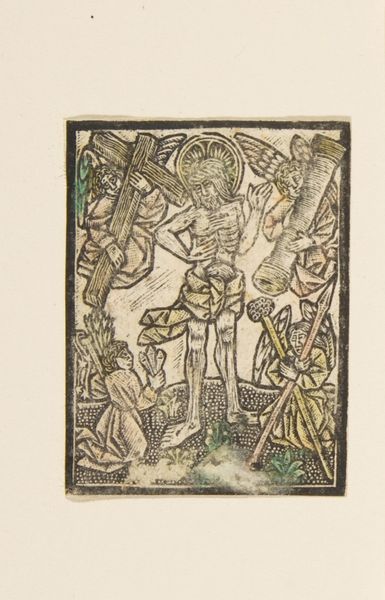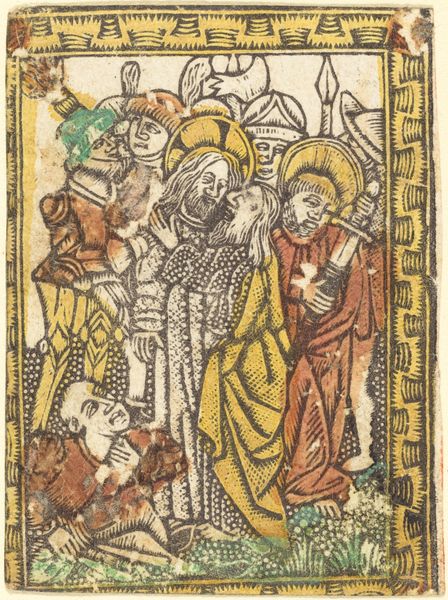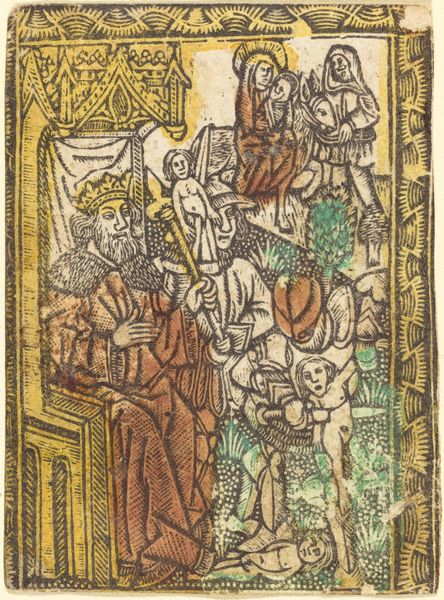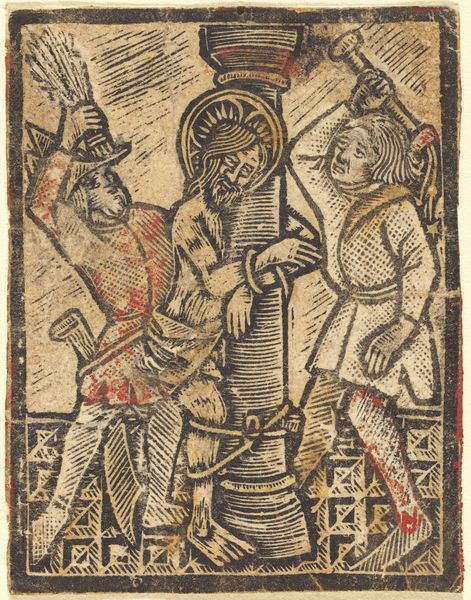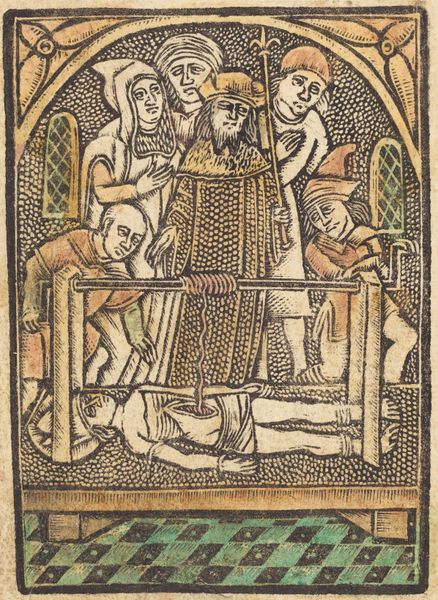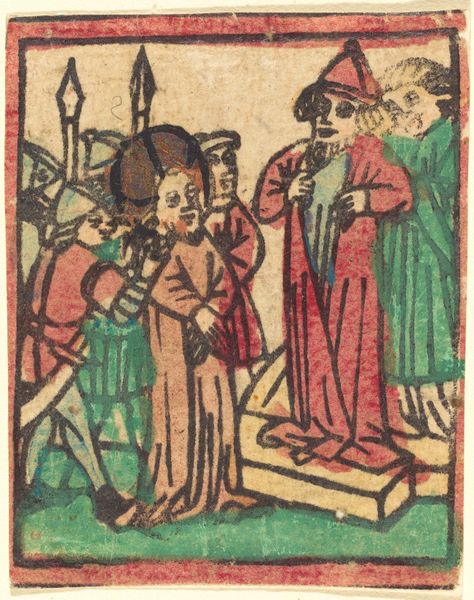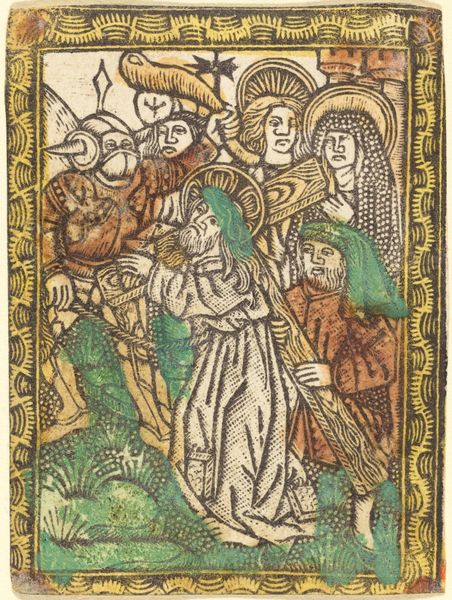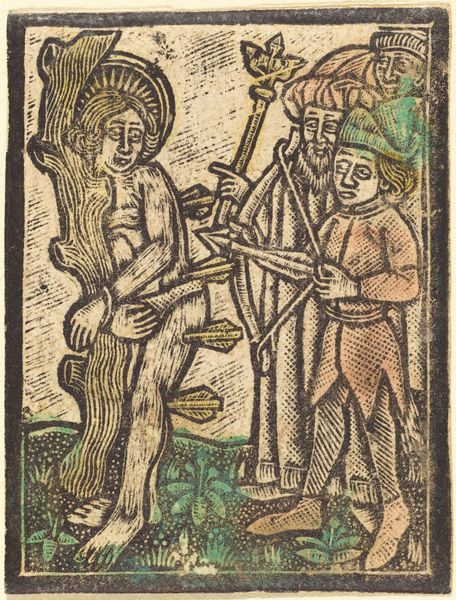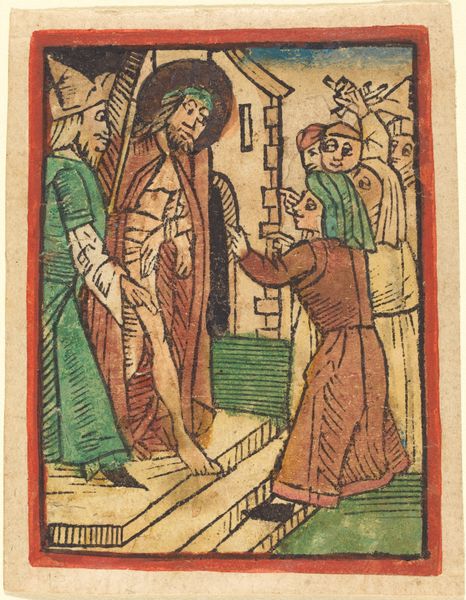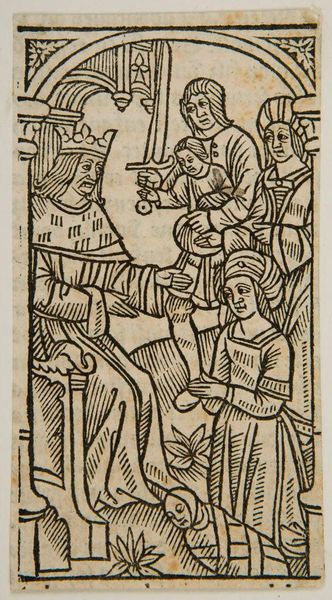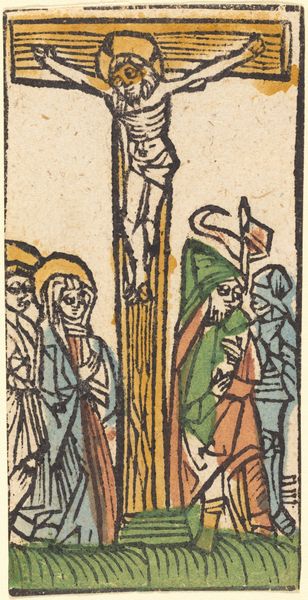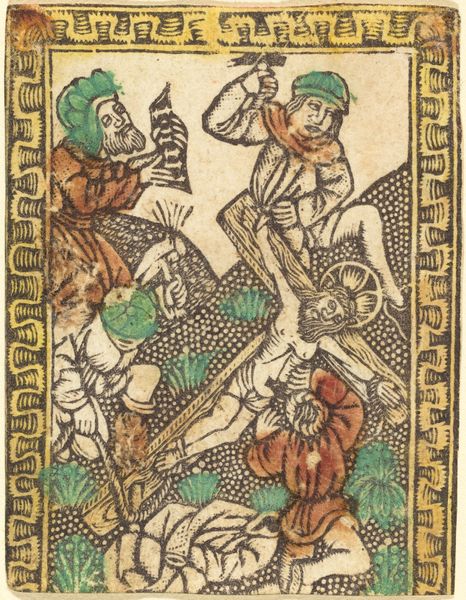
Martyrdom of St. Erasmus after the Master of St. Erasmus (Schr. 2621) 15th century
0:00
0:00
drawing, print, woodcut
#
drawing
#
narrative-art
# print
#
figuration
#
woodcut
#
northern-renaissance
Dimensions: sheet: 2 3/8 x 1 13/16 in. (6 x 4.6 cm)
Copyright: Public Domain
Curator: What a profoundly unsettling scene. The subject seems to writhe in agony while a cluster of figures loom. Is this a vision of hell? Editor: This is a 15th-century woodcut, currently held at the Metropolitan Museum of Art, depicting the Martyrdom of Saint Erasmus. It's believed to be by an anonymous Northern Renaissance master. Curator: The title certainly casts the image in a new light. Yet, even understanding the context, I find myself grappling with the graphic detail – it’s quite visceral for the time, isn't it? The symbol that is featured above the figure with his hands clasped behind it…what significance do you attach to this Iconography? Editor: Absolutely. Look at the windlass that stands out: this instrument of torture became St. Erasmus' defining attribute. According to legend, he met his end through abdominal evisceration with this mechanism. Curator: Evisceration. So the scene displays the excruciating suffering he endured. Given the brutal reality represented, is there a specific resonance for its original audience? Editor: Religious images in that era served very immediate roles; this was not abstract artistic experimentation but the reaffirmation of the beliefs, ideals, and social foundations of society through the representation of Christian iconography. This work creates what cultural theorist Svetlana Alpers famously calls a ‘visual experience' of terror – using an emotionally heightened scenario of death that could be visually reproduced and socially memorialized, perhaps it’s an attempt to enforce an allegorical political agenda from within the institution of the church at the time? Curator: Perhaps. But given our remove from the late Medieval-Early Renaissance, is the original symbolism accessible? To contemporary eyes, it evokes feelings more akin to fear and revulsion... Do you think the graphic horror risks overshadowing whatever original meaning? Editor: The visual depiction has most certainly carried emotional weight through cultural transmission: in an effort to emphasize and portray St. Erasums’ pain and suffering, the anonymous maker achieved immortality. The horror only serves to ensure our interaction, attention and therefore…remembrance of the original intention. The icon still works, even if the details get smudged in transmission. Curator: That's a strong argument. Thinking about the place of religious art and imagery now, I think understanding that dynamic exchange between initial intention and lasting reception does so much for understanding why these kinds of images endure – beyond aesthetics. Editor: Absolutely. Whether it's an exercise of horror, an institutional agenda, or a work of faith - the image continues to spark conversation, doesn’t it?
Comments
No comments
Be the first to comment and join the conversation on the ultimate creative platform.
